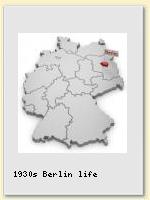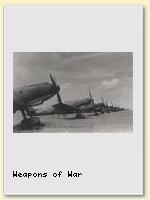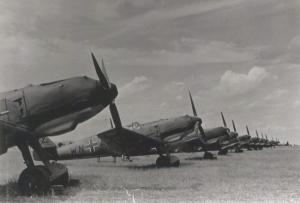
ME 109
The ME 109, Germany’s Messerschmitt fighter, was Gorings ‘baby’. Designed and proven in competition against other German manufactured airplanes, the ME109 and aerial warfare would have a major part to play in WW2 offensives.
While Goring took the view, “We must begin to let our enemies know our strength.” Reinhard Ernst proposed they should be more circumspect about showing any military capability at the 1936 Olympics.
However that strength would become apparent one year after the Olympics when an ME109 took major awards at the International Flying Meeting in Zurich, and by the November had set a record speed of 379.38 mph. Before the war was over, more than 30,000 planes would have been built.
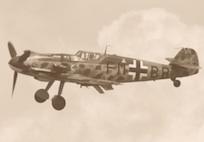
Early prototype of the ME 109 was fitted with 675 horsepower Rolls Royce Kestrel engines, power that was later boosted above 1,000 horse power with Daimler Benz engines. Power gave it an outstanding rate of climb, as was its ability to dive near vertically, its fuel injection system functioning regardless of ‘g force’ and speed. There would be many variations of the 109 (from the ‘B’ model in 1937 to a final ‘K’ variant in 1945, and many versions of each), as ever more powerful engines and armaments were developed - a perpetual scramble for superiority through technology.
As Dr Ing Messerschmitt described in 1942:
‘this aircraft has been developed constantly at a hectic pace to meet the new challenges,
and improved upon over and over again, so that to this day our enemies consider it the
most successful fighter in the world.’
However, in 1940, the Spitfire and the Messerschmitt seemed evenly balanced. The Spitfire though was given an edge through availability of a high performance aviation fuel – sufficient to raise its speed, manoeuvrability and rate of climb beyond that of the ME 109. It was Spitfires that won out in the war in the skies over Britain.
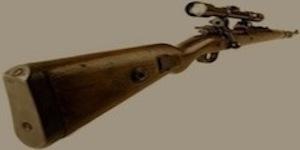
Karabiner k98
Reggie Morgan had found a man who could provide the weapon Paul is to use to kill Reinhard Ernst – a Karabiner k98, with a telescopic sight, that can be broken down to fit in a suitcase.
The basic Karabiner was the mainstay of the German army, was used by other armed forces and was known for its reliability. During WW2 more than 14 million, in a number of variants, were made in Germany. Fitted with telescopic sight it was accurate to 1000 metres, the German army’s most used and favourite sniper rifle. The 7.9mm bullet it uses is a one shot kill calibre. It is claimed that if a sniper gets you in his sights then you would be dead before the sound of the shot ever reached you!
Snipers were selective in their targets, often staying still for hours in camouflage until their target was in their sights, weakening the enemy by taking out identified high ranking officers and commanders. Crack German sniper was Matthias Hetzenauer who had 345 confirmed hits, the longest over a distance of 1100 metres. Matched by a Russian woman, Lyudmila Pavlichenko, who also had more than 300 kills to her credit, 36 of whom were German snipers.
Modern weapons make killing by a sniper possible at longer distances still, although feedback from a ‘spotter’ is needed so as to make adjustments for wind and drop if a first shot misses. In an actual incident where the shot was made over a distance of more than 2,500 metres – the bullet taking 4 seconds to reach the target – the sniper had to make an adjustment of aiming 20 inches to the left of the target and six foot above.
Trained snipers would dependably kill with a headshot at distances of 400metres whereas those who were classed as marksmen, but did not have special training, were only found to be effective up to just half that distance. More than a sufficient range for the plan ‘button man’ Paul had to ‘touch off’ his target, even though he would really have preferred to operate at close quarters.
In fact Paul had the opportunity for a kill at close quarters but, such was his reliance on meticulous planning, he was not able to take advantage when that moment arrived.


 Beyond the Book
Beyond the Book




